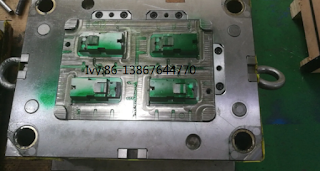30 standard requirements for plastic molding manufacturing
30 standard requirements for plastic molding manufacturing
In order to improve quality of molds, greatly reduce complaints about mold quality problems, and ensure molds that are satisfactory to customers, common problems in mold manufacturing are summarized, standards are established and implemented as required.
1. A mold blank smaller than 2020, a die pit is required between a and b plates; a mold pit larger than 2020, all templates including thimble plate are to be smashed.
2. Mold guide post guide sleeve should be processed to exhaust groove to prevent guide post guide sleeve from being pulled.
3. There must be no sharp corners on plastic molding and chamfering is required. Except some places that is specified.
4. Inner mold and mold parts must not be welded without consent.
5. Periphery of mold product must be opened at appropriate position. For specifications of exhaust groove, please refer to plastic mould design manual.
6. Avoid using a sander to grind mold. If it is necessary to use a sander, you must use oil stone to polish (especially parting surface).
7. Surface treatment of internal molding surface must be carried out in accordance with bom table or other officially notified technical requirements. Processing lines on non-adhesive surface (line cutting, milling machine, cnc trampoline, spark machine) should also be polished with oil stone.
8. All internal mold materials, mold grade requirements must be purchased according to order, or technical requirements officially confirmed during plastic mould design review process. A proof of material must be provided, and if it is a hard mold, a heat treatment report and all relevant proofs must be provided.
9. Front and rear inner molds, inserts, row position, slant top, straight top (push block), wedge of all plastic molding need to process a waist round pit on the bottom or side, engraving material name and hardness.
10. Important wearable parts such as row position, push block, wedge, and pout must be nitrided and hardened.
11. Position must be positioned. Positioning methods include slingshot, wave bead, hasco (dme) standard position clip which need to be finished in accordance with requirements of each project. Row needs to have a bead and a wear plate. For beading and wear-resistant plates, wear-resistant hard materials must be used, and oil grooves are required.
12. Row guide column must be pressed tightly and cannot be rotated or loosened. Tail of inclined guide column must be processed into a hemispherical or truncated cone shape to help ensure normal movement of row. If there are two or more inclined guide columns in the same row position, length, size and inclination of inclined guide columns must be same.
13. Sloping top seat must use hard wearing materials. Inclined top must be machined with oil grooves. Inclined top seat is generally hardened with 2510 or cr12 to hrc40-45 degrees. Because inclined top seat is subjected to impact load, it cannot be too hard or it will break and chamfer c angle at all right angles. . A sloping top guide (bronze) is required. Do not weld.
14. Flow path and glue position need to polish at #400-600.
15. Pin, cylinder, thimble, slanting top should be engraved with corresponding identification code for easy installation. If pin position is not horizontal on product, you need to make ejector pin “d” type or use anti-rotation key to position.
16. Pin adopts hasco or dme standard, which is determined by mold technical requirements determined by bom table or other official notice.
17. Processing water apron (“o” ring) groove, need to reserve a gap of 0.25mm on one side. Generally apron should be pre-pressed 0.5~0.8mm. If you do not pay attention to this, rubber ring is easily damaged by pressure and causing water leaks.
18. Sprue needs to be nitrided and needs to assemble rolling stopper pin. Radius of beak must meet drawing requirements. If sprue is not nitrided and may have been injured before finished.
19. Conventional structure mold must be arranged with support head, two end need to be flattened. Small mold preload 0.1mm, and large mold preload 0.1mm-0.15mm.
20.Diameter of positioning ring of mold parts must conform to drawing, form and position of top joint must conform to drawing.
21. For specifications of nozzle, please refer to bom table or confirmed pattern. Nozzle counterbore must be processed and installed according to mold. Drill holes must not be drilled, and sharp angles must be chamfered.
22. Water must be labeled with ini, outi, in2, out2………..
23. All words on plastic molding must be neat, correct, and not to be twisted.
24. Mold needs to be installed on four sides of side lock (straight body lock). If side lock cannot be installed, you need to install a taper lock or a cone lock. Taper lock should be installed sideways.
25. All screws and mold parts require preferred standard parts and screw heads cannot be sawn off. Effective locking length of screw must be sufficient, normally 1.5 or 2.
26. Hot nozzle slot must be rounded to avoid scratching wires.
27. Install hot nozzle id card on one side of mold panel.
28. Mold Transfer Acceptance: It is necessary to cooperate with mold engineer to pass the “Mold Inspection Form” acceptance before passing package.
29. Before plastic molding is transferred, water pressure should be tested (100pa or more). After water pressure is accepted, air gun should be used to blow water clean.
30. Outer surface of mold blank needs to be maintained during manufacturing process to prevent rust and scratches. Before plastic molding is packaged, inner mold needs to be sprayed with white/colorless rust inhibitor. All mold surfaces must be cleaned and then buttered.
More mold details or technical problems, welcome to contact us to further discussion. Whatsapp:86-13867644770 (Ivy)




评论
发表评论